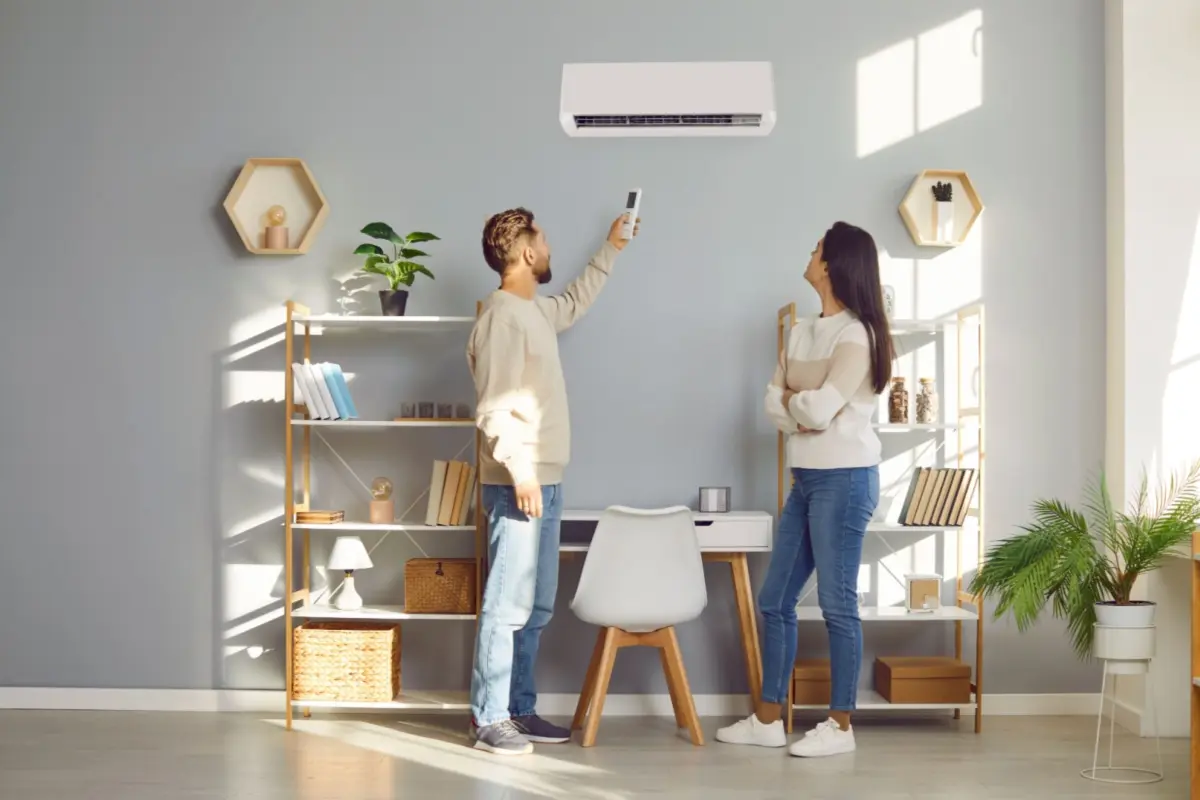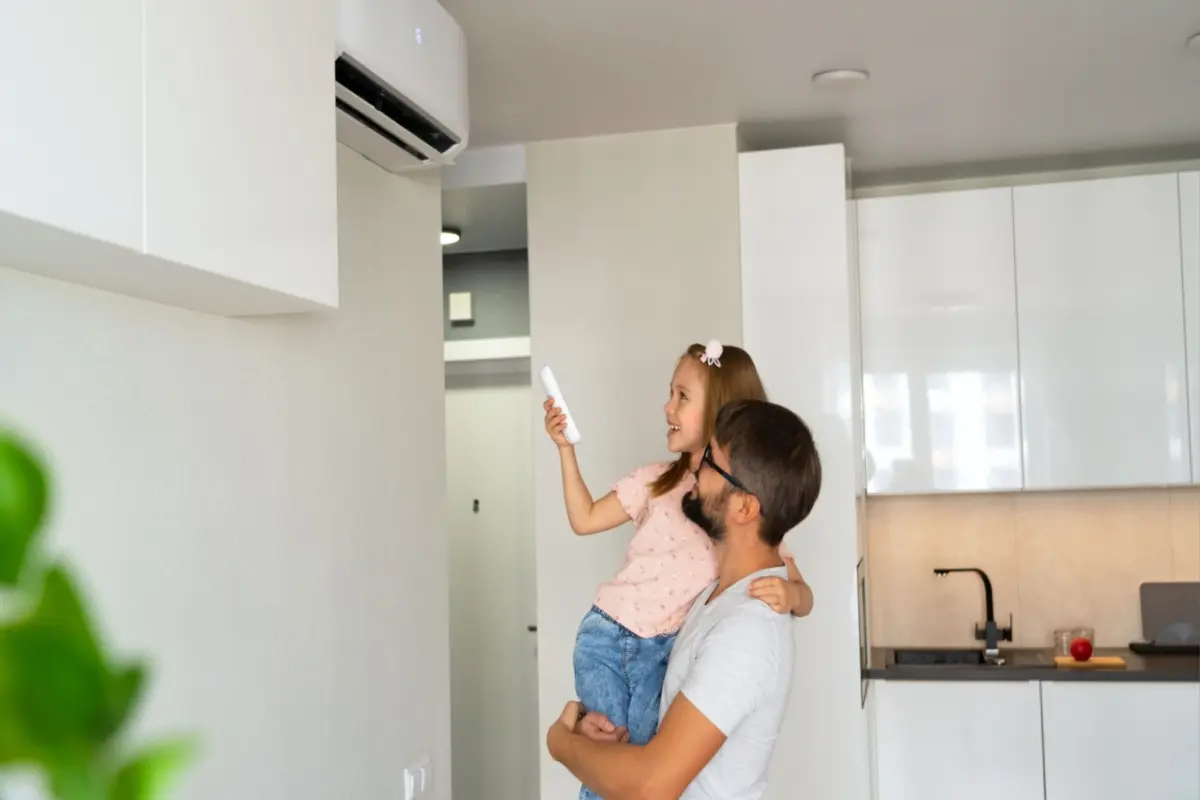Installing a new HVAC system often requires a significant investment, but various financing options for HVAC systems can make it more affordable. By choosing the right HVAC financing option and taking advantage of rebates or tax credits, you can spread out the expense of your heating and air conditioning upgrade with minimal strain on your wallet. This guide explains the best way to finance a new HVAC system based on your specific situation.
A new HVAC system can is about $19,000 or more for an average home. Costs vary widely based on the system type (central AC, furnace, heat pump, etc.), the size and layout of your home, and the complexity of the installation. For example, adding new ductwork or upgrading to a high-grade seasonal energy efficiency ratio (SEER) unit will raise the price.
Upgrading your HVAC is often an urgent need, especially if your old system fails unexpectedly. We realize that paying the full cost out-of-pocket isn’t feasible for every homeowner. Fortunately, there are plenty of HVAC financing options available. Below are four of the best HVAC financing methods to consider when you need a new heating or cooling system.

Personal loans are unsecured loans you can obtain from a bank, credit union, or online lender and use for your HVAC upgrade project. You’ll receive a lump sum upfront and repay it in fixed monthly installments over a set term (typically two to seven years). Personal loans require no collateral, so you won’t be putting your home on the line.
Interest rates on personal loans can range from single digits to around 30% APR, depending on your credit score and income. Borrowers with good credit usually qualify for the lowest rates and better terms. In February 2025, the average interest rate on a 24-month personal loan was about 11.7% — lower than most credit card rates.
Loan amounts can be as high as $35,000 or more, covering most HVAC installs. Many lenders offer quick approval (sometimes even same-day funding), making this a convenient choice if your furnace or AC unexpectedly dies.
Personal loans are often the best way to finance a new HVAC if you qualify for a low APR. There are even HVAC loan programs explicitly marketed for home improvement, which may have flexible terms. However, be sure to read the terms to ensure you understand the interest rate, fees, and total repayment amount before signing.
If you own your home and have built up equity, leveraging that equity can provide low-interest financing options for an HVAC system. There are two main ways to do this: a home equity loan or a home equity line of credit (HELOC). Both are essentially second mortgages utilizing your home as collateral and allowing you to borrow against the value you’ve built up.
Because they are secured by your property, home equity loans/HELOCs usually offer lower interest rates than unsecured options. It’s common to find rates from 6.5% to 11.6%, depending on market conditions and your credit. Also, interest may be tax-deductible if the funds are used for home improvements. You’ll need to consult your tax advisor, but the IRS usually allows a deduction of home equity interest when used to “buy, build, or substantially improve” your home.
While home equity loans and HELOCs typically offer lower rates and the possibility of tax benefits, the application process is a bit more involved and slower than a simple personal loan. Additionally, you should only choose this route if you’re comfortable using your home as collateral and have a clear plan to repay the debt.
Using a credit card is another way to finance a new HVAC, especially if you can take advantage of special financing offers. Some HVAC companies even offer their own branded credit card or facilitate a zero-percent financing promotion for a period.
Credit cards tend to have higher interest rates. The Federal Reserve reports that the average credit card APR is about 21%, which can make carrying a large HVAC balance costly. However, if you have decent credit, you might qualify for a card with a 0% APR introductory period, commonly from 12 to 18 months.
This essentially gives you an interest-free loan if you pay off the balance within the promo period. If you’re confident you can pay off the balance in the allotted time, this is an excellent deal for financing an HVAC replacement. Additionally, some big-box home improvement stores offer 0% deferred interest deals on HVAC purchases. However, just be sure to pay before the promo ends, or interest might be retroactively applied.
It’s best to utilize credit cards for an HVAC purchase either as a short-term bridge (paid off in a few billing cycles or during a 0% period) or if you have no other option and need the repair immediately.
Many HVAC installation companies offer direct financing or payment plans for a new HVAC system as part of their sales process. This is often in partnership with a finance company or bank.
For example, a local HVAC contractor might offer “0% interest for 12 months” on a new system or low APR installment plans to help customers afford big projects. Manufacturer-sponsored financing (e.g. Carrier, Trane, Lennox, etc.) is also common and typically handled through a service like Wells Fargo or Synchrony.
Contractor financing can take various forms. Some are essentially a credit card with a set credit line you use for the purchase, while others are installment loans.
Promotional rates are a big draw for this HVAC financing option. For example, an HVAC company might offer 0% APR for 60 months for qualified buyers, meaning you can pay interest-free over five years. (Though, qualifying usually requires strong credit.) Another example is that some utilities or regional programs partner with contractors to provide on-bill financing at 0% interest up to a certain amount.
Even those with fair or poor credit might find HVAC financing through their contractor. Some contractors work with lenders who cater to subprime credit (though at higher rates), and some offer in-house plans or HVAC leasing options for bad credit situations.
One of the easiest ways to lower the cost of a new HVAC system is to tap into federal tax credits. Through 2032, you can claim 30% of your system’s cost (up to $3,200 per year) on your taxes. This includes up to $2,000 for heat pumps (or pump water heaters) and $600 for other equipment like central AC or furnaces. However, you should consult the latest IRS guidelines or a tax professional to determine eligibility and credit amounts.

On top of federal credits, many utilities and states offer rebates ranging from a few hundred to over a thousand dollars for installing high‑efficiency HVAC gear. A typical utility rebate might be $300 for a high‑SEER air conditioner or $500 for an efficient furnace. Check with your local electric or gas provider and state energy office to find current offers.
In some markets, you can even stack incentives. For instance, New Jersey’s PSE&G program has offered instant rebates up to $1,050 on efficient equipment plus 0% financing on the remaining balance via your utility bill. If your area has a similar combo, you’ll enjoy lower upfront costs and interest‑free payments.
Manufacturers also run seasonal rebates. Brands like Carrier or Trane often advertise up to $500 back on qualifying systems. After installation, you’ll submit your paperwork and receive a prepaid card or check, with your contractor usually helping to handle the details.
A working HVAC system is about more than comfort. In winter, reliable heat prevents dangerously cold indoor temperatures; in summer, effective cooling guards against heat‑related illness. Financing a timely replacement keeps your home a safe refuge in extreme weather.
Modern, properly sized systems also run more efficiently. When your HVAC cycles on and off as needed, it uses less energy and costs less to operate. Even if you’re paying installments, lower utility charges can offset those monthly bills over time.
Beyond temperature control, your HVAC filters and circulates air, reducing humidity, dust, and allergens. Regular maintenance, or investing in a new system, helps keep mold at bay and ensures the air you breathe is clean.
Finally, constant repairs on an aging unit can quickly outpace replacement costs. As repair bills climb and breakdowns multiply, financing a new system often makes financial sense rather than throwing money at a failing system.
The $5,000 rule multiplies a unit’s age by repair cost. If it exceeds $5,000, replacing it is often more cost‑effective than further repairs.
Yes. Options include PACE programs (available in some states) requiring no minimum score, home equity loans if you have equity, or contractor plans geared to lower credit, but you should expect higher rates or fees.
Paying cash helps you avoid interest and may earn contractor discounts, but it can deplete your savings. Financing is smart if you lack funds or want to keep an emergency reserve — especially with low or 0% APR offers.
Spring and fall are best. Contractors offer more deals and flexible scheduling during off‑peak seasons. Avoid peak summer or winter, if you can, when demand and prices are highest.
Costs depend on home size and climate, system type and efficiency, ductwork needs, installation complexity, and brand or contractor rates. Additional items like thermostats or zoning can also add to the cost.
Have a professional perform a load calculation, consider existing ductwork and fuel type, weigh efficiency against cost, and compare system features, warranties, and contractor recommendations.
Yes. Look for contractors or manufacturers offering 0% APR promotions, credit cards that offer 0% introductory periods, or utility on‑bill financing with interest‑free terms for qualified energy‑efficient upgrades.
Regular tune‑ups and filter changes boost efficiency by 5% to 15%, lower energy bills, prevent major breakdowns, extend equipment life, and protect warranties.
Yes. Higher‑efficiency units usually cut energy use by 20% or more. These units often qualify for rebates and tax credits, improve comfort and reliability, and can pay for themselves over time.